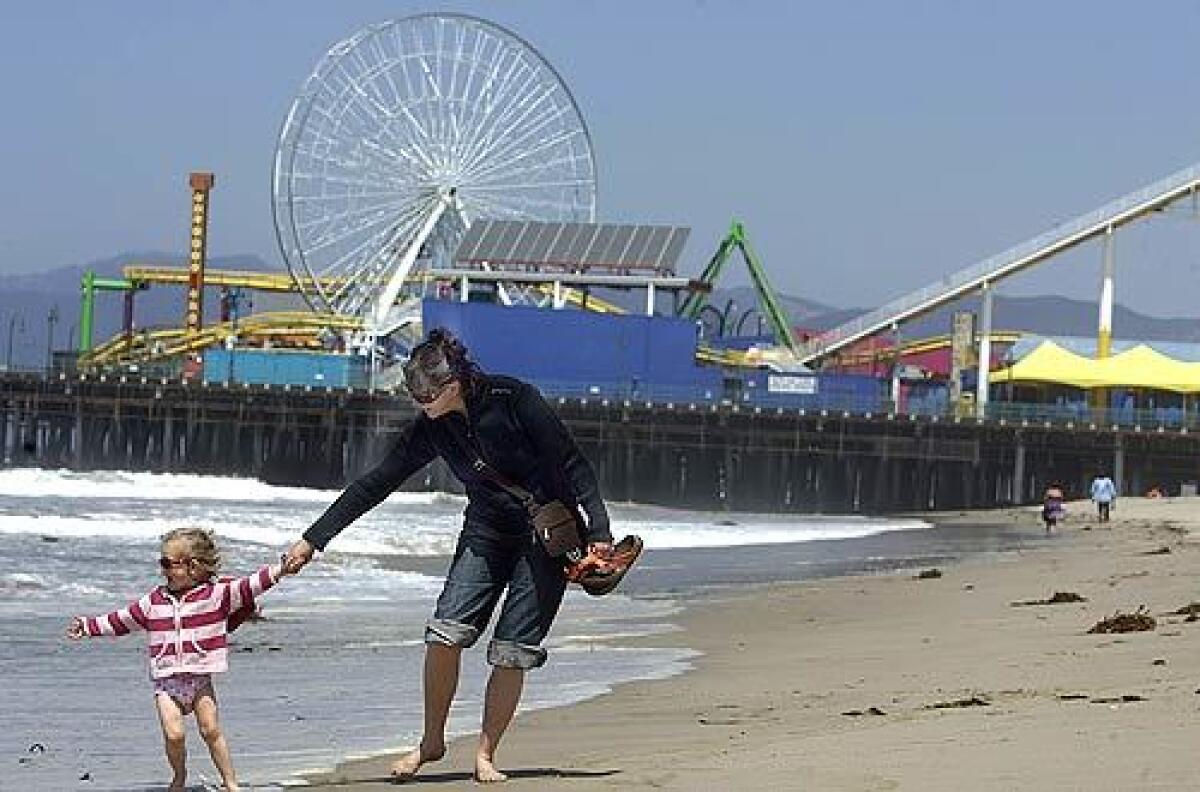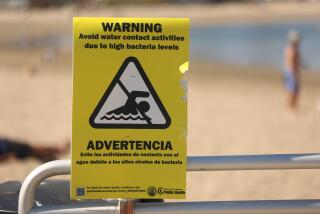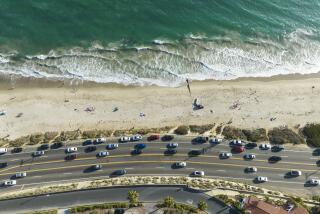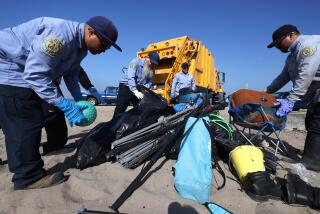Pollution survey finds California beaches cleaner

Waters off California’s coast are cleaner -- and safer for swimmers and surfers -- in dry weather than they’ve been in years, according to a new environmental report released this morning.
But while water quality is improving overall statewide, Los Angeles County is home to the most bacteria-laden seawater in California for the third straight year. Half of the 10 foulest shorelines in the state are in Los Angeles County, with the dirtiest water at Avalon Harbor Beach on Santa Catalina Island.
Other “beach bummers” with the worst water quality were the waters at Santa Monica Pier, Poche Beach and North Beach Doheny in South Orange County, Marie Canyon at Puerco Beach in Malibu, Cabrillo Beach in San Pedro and various locations in Long Beach.
Drier-than-average weather helped keep most ocean waters cleaner; in rainy conditions, however, more than half of Southern California beaches tested fair to poor for traces of fecal bacteria.
“For storm water pollution, we’re not doing a good job at all,” said Mark Gold, president of the Santa Monica-based nonprofit Heal the Bay, which compiles the report. “The beaches are just as polluted today during rainstorms as they were 15 years ago.”
Runoff can contain trash, toxic heavy metals, pesticides, fertilizer, petroleum byproducts, animal waste and human sewage.
“It’s not surprising -- it’s just frustrating,” Gold said. “We’ve had so much progress in so many other, different areas of coastal protection [yet] our beaches still look like landfills after every rain.”
Heal the Bay’s annual beach report card tests more than 500 locations on the California coast for daily and weekly fecal bacteria pollution levels. Letter grades from A to F indicate the risk of health effects like stomach flu, ear infections and rashes from swimming in contaminated water. Ocean water is analyzed for total coliform, fecal coliform -- also known as E. coli -- and enterococcus; total coliform can come from soil, plants, animals and humans, and the other two types are found in bird and mammal droppings.
This year, 87% of beaches statewide and in the Southland received A or B grades during dry weather; only 71% of beaches in Los Angeles County alone scored that high. Santa Monica Bay, long the subject of environmental and government scrutiny for pollution problems, is cleaner, Gold said. At the same time, Long Beach, at the terminus of the Los Angeles River, has developed as a new trouble spot, with particularly dirty water two years running.
“They’re stuck sort of at the proverbial end of the pipe,” Gold said.
“We still have work to do,” said Dr. Jonathan Fielding, director of the Los Angeles County Department of Public Health. “The good news is most of Los Angeles County beaches are in great shape the vast majority of the time.”
One factor in Los Angeles County’s water testing dirtier than the rest of the state’s is its new technique of measuring samples directly in front of flowing storm drains and creeks; other jurisdictions tend to collect water samples from dozens of yards away, where the contamination is less concentrated. Gold argues that samples gathered right at the pollution source provide more accurate data, and Heal the Bay is pushing for all water to be collected that way.
The full report card, with county-by-county grades, can be found at www.healthebay.org/brc.
susannah.rosenblatt@latimes.com
More to Read
Sign up for The Wild
We’ll help you find the best places to hike, bike and run, as well as the perfect silent spots for meditation and yoga.
You may occasionally receive promotional content from the Los Angeles Times.






